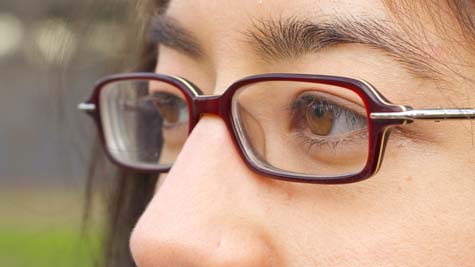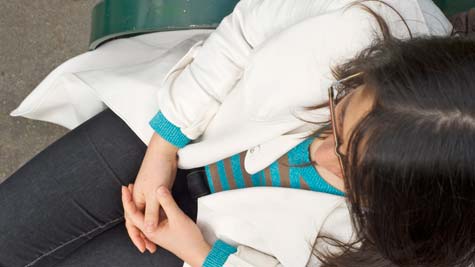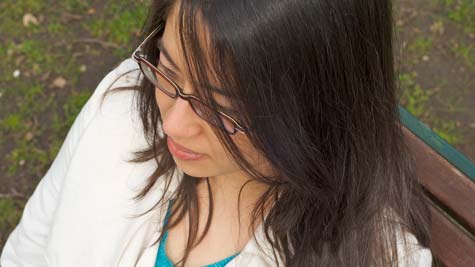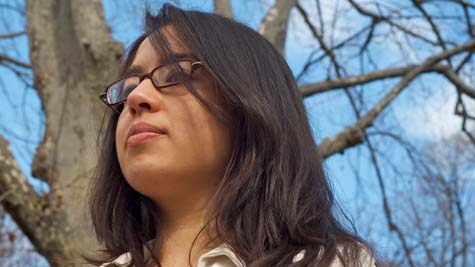Cinematography Ultimate Test: Trivia Quiz!
(177).jpg)
.
- 1.
Which type of shot size best describes this illustration?
- A.
Extreme long shot.
- B.
Long shot.
- C.
Full shot.
- D.
Mid shot.
- E.
Close up.
- F.
Extreme close up.
Correct Answer
A. Extreme long shot.Explanation
The given illustration shows a wide view of the scene, capturing a large area and providing context. This is characteristic of an extreme long shot, which is often used to establish a location or setting.Rate this question:
-
- 2.
An establishing shot is often used at the beginning of a scene.
- A.
True.
- B.
False,
Correct Answer
A. True.Explanation
An establishing shot is a common technique used in filmmaking to provide the audience with a clear and wide view of the location or setting before zooming in to specific characters or actions. This shot helps to establish the context and spatial relationships within the scene, allowing the viewers to better understand the following events. Therefore, it is logical to use an establishing shot at the beginning of a scene to set the stage and provide a visual introduction for the audience.Rate this question:
-
- 3.
Handheld camera movement is often used to create a sense of realism.
- A.
True.
- B.
False.
Correct Answer
A. True.Explanation
Handheld camera movement is often used in filmmaking to create a sense of realism. By using a handheld camera, the shots appear more natural and spontaneous, mimicking how our eyes perceive the world. This technique adds a sense of authenticity and immerses the audience in the story, making them feel like they are part of the action. Handheld camera movement can also create a documentary-style effect, giving the film a raw and gritty look. Overall, using handheld camera movement helps to enhance the realism and believability of the film.Rate this question:
-
- 4.
When two people are shown together in a frame like this, it is called a…
- A.
Two shot.
- B.
Over the shoulder shot.
- C.
Close up.
- D.
Mid shot.
Correct Answer
A. Two shot.Explanation
A "two shot" refers to a camera shot that includes two people in the frame. In this case, the question is asking for the term used when two people are shown together in a frame, and the correct answer is "two shot." This term is commonly used in film and photography to describe a shot that features two individuals in the same frame, typically capturing their interaction or relationship. The other options mentioned, such as "over the shoulder shot," "close up," and "mid shot," are different types of camera shots that may or may not include multiple people in the frame.Rate this question:
-
- 5.
The framing technique demonstrated in this diagram is…
- A.
Look room.
- B.
Head room.
- C.
Rule of thirds.
- D.
180 degree rule.
- E.
30 degree rule.
Correct Answer
A. Look room.Explanation
The framing technique demonstrated in this diagram is the "look room" technique. This technique involves leaving empty space in the frame in the direction that the subject is looking, creating a sense of balance and allowing the viewer to follow the subject's gaze. It helps to create a more visually appealing and engaging composition.Rate this question:
-
- 6.
Which of the following are forms of video compression?
- A.
MP4.
- B.
AIFF.
- C.
WMV.
- D.
WAV.
- E.
MOV.
- F.
MP3.
- G.
AVI.
Correct Answer(s)
A. MP4.
C. WMV.
E. MOV.
G. AVI.Explanation
MP4, WMV, MOV, and AVI are all forms of video compression. Video compression is the process of reducing the size of a video file, making it easier to store and transmit. MP4 is a widely used video format that offers good compression while maintaining high-quality video. WMV (Windows Media Video) is a video format developed by Microsoft, known for its efficient compression. MOV is a video format commonly used by Apple devices and is known for its high-quality compression. AVI (Audio Video Interleave) is a video format that supports various compression methods, making it versatile for different platforms and devices.Rate this question:
-
- 7.
Which of the following are audio files?
- A.
MP4.
- B.
AIFF.
- C.
WMV.
- D.
WAV.
- E.
MOV.
- F.
MP3.
- G.
AVI.
Correct Answer(s)
B. AIFF.
D. WAV.
F. MP3.Explanation
AIFF, WAV, and MP3 are all audio file formats commonly used to store and play back audio recordings. MP4, WMV, MOV, and AVI, on the other hand, are video file formats that can also contain audio tracks but are primarily used for video playback. Therefore, the correct answer is AIFF, WAV, and MP3.Rate this question:
-
- 8.
This aspect ratio is commonly called:
- A.
Standard definition.
- B.
Widescreen.
- C.
High definition.
- D.
MP4.
Correct Answer
B. Widescreen.Explanation
Widescreen is commonly referred to as the aspect ratio mentioned in the question. The other options, such as Standard definition, High definition, and MP4, are not commonly associated with the specific aspect ratio mentioned.Rate this question:
-
- 9.
This aspect ratio is commonly called:
- A.
Standard definition.
- B.
Widescreen.
- C.
High definition.
- D.
MP4.
Correct Answer
A. Standard definition.Explanation
The given options are different types of aspect ratios. Standard definition refers to the aspect ratio commonly used for traditional television screens. Widescreen refers to a wider aspect ratio commonly used for movies. High definition refers to a higher resolution aspect ratio commonly used for modern televisions. MP4 is a file format, not an aspect ratio. Therefore, the correct answer is Standard definition.Rate this question:
-
- 10.
A point of view shot:
- A.
Shows what a character sees.
- B.
Shows a close up of a character.
- C.
Is when the camera is positioned over a character's shoulder.
- D.
Is a close up of a character's face.
Correct Answer
A. Shows what a character sees.Explanation
A point of view shot is a camera technique that shows the audience what a character sees from their perspective. It allows the audience to experience the scene through the character's eyes, creating a sense of immersion and empathy. This shot is often used to enhance the audience's understanding of the character's emotions, thoughts, and reactions to the events happening around them.Rate this question:
-
- 11.
The most appropriate shot size for showing the emotions on a character's face is…
- A.
Extreme long shot.
- B.
Long shot.
- C.
Full shot.
- D.
Mid shot.
- E.
Close up.
- F.
Extreme close up.
Correct Answer
E. Close up.Explanation
A close up shot is the most appropriate shot size for showing the emotions on a character's face because it allows the audience to see the subtle details and expressions on the character's face, which can effectively convey their emotions. This shot size focuses solely on the character's face, eliminating any distractions and allowing the audience to fully connect with the character's emotions.Rate this question:
-
- 12.
The most appropriate shot size for showing a character's wristwatch is…
- A.
Extreme long shot.
- B.
Long shot.
- C.
Full shot.
- D.
Mid shot.
- E.
Close up.
- F.
Extreme close up.
Correct Answer
F. Extreme close up.Explanation
An extreme close up shot is the most appropriate shot size for showing a character's wristwatch because it allows for a detailed view of the watch, emphasizing its importance and significance to the character or the scene. This shot size is typically used to draw the viewer's attention to specific details or objects, and in this case, it effectively showcases the wristwatch as a focal point.Rate this question:
-
- 13.
The most appropriate shot size to establish the film will occur in a city is…
- A.
Extreme long shot.
- B.
Long shot.
- C.
Full shot.
- D.
Mid shot.
- E.
Close up.
- F.
Extreme close up.
Correct Answer
A. Extreme long shot.Explanation
An extreme long shot is the most appropriate shot size to establish the film in a city because it captures a wide view of the surroundings, providing context and setting the scene for the audience. It allows the viewers to see the cityscape, the buildings, and the overall atmosphere of the city, giving them a sense of the location and its scale. This shot size is commonly used at the beginning of a film to introduce the setting and create a sense of place.Rate this question:
-
- 14.
The most appropriate shot size to show a street with several people walking past a store is…
- A.
Extreme long shot.
- B.
Long shot.
- C.
Full shot.
- D.
Mid shot.
- E.
Close up.
- F.
Extreme close up.
Correct Answer
B. Long shot.Explanation
A long shot would be the most appropriate shot size to show a street with several people walking past a store because it captures the entire scene and allows the viewers to see the street and the people in relation to the store. It provides enough context and shows the scale of the location and the number of people present.Rate this question:
-
- 15.
If you want to show what a character is looking at, the most appropriate shot would be…
- A.
Extreme long shot.
- B.
Long shot.
- C.
Full shot.
- D.
Point of view shot.
- E.
Two shot.
- F.
Over the shoulder shot.
Correct Answer
D. Point of view shot.Explanation
A point of view shot is the most appropriate shot to show what a character is looking at because it allows the audience to see the scene from the character's perspective. This shot helps to create a sense of immersion and allows the audience to experience the scene through the character's eyes, enhancing the storytelling and creating a stronger connection between the audience and the character.Rate this question:
-
- 16.
A zoom is…
- A.
When the camera lens magnifies an image.
- B.
When the camera is mounted on a moving platform and approaches the subject.
- C.
The camera operator wears a special vest to achieve smooth handheld camera movement.
- D.
The camera is handheld.
Correct Answer
A. When the camera lens magnifies an image.Explanation
A zoom refers to the action of the camera lens magnifying an image. This allows the camera operator to adjust the focal length and bring the subject closer or further away without physically moving the camera or changing its position. Zooming in magnifies the image, making it appear closer, while zooming out reduces the magnification, making the image appear further away. This is a common technique used in photography and videography to capture different perspectives and create visual effects.Rate this question:
-
- 17.
A 'dolly in' is…
- A.
When the camera lens magnifies an image.
- B.
When the camera is mounted on a moving platform and approaches the subject.
- C.
The camera operator wears a special vest to achieve smooth handheld camera movement.
- D.
The camera is handheld.
Correct Answer
B. When the camera is mounted on a moving platform and approaches the subject.Explanation
A "dolly in" refers to the technique of moving the camera closer to the subject by mounting it on a moving platform. This allows for a smooth and controlled approach towards the subject, creating a sense of depth and perspective in the shot. It is different from handheld camera movement or using a special vest, as it involves a specific method of physically moving the camera towards the subject.Rate this question:
-
- 18.
A steadicam is…
- A.
A platform that the camera moves on.
- B.
A vest that the camera operator wears to achieve smooth camera movement.
- C.
A set of tracks that the camera is mounted on.
- D.
An in-camera filter to stabilise footage.
Correct Answer
B. A vest that the camera operator wears to achieve smooth camera movement.Explanation
A steadicam is a vest that the camera operator wears to achieve smooth camera movement. This vest is equipped with a stabilizing mechanism that counteracts any shaking or movement of the camera operator, allowing for steady and smooth shots. The steadicam technology revolutionized the way camera operators could capture footage by eliminating the need for tracks or platforms and providing more freedom of movement.Rate this question:
-
- 19.
A type of camera movement that follows the subject is called:
- A.
A dolly shot.
- B.
A steadicam shot.
- C.
A tracking shot.
- D.
A handheld shot.
Correct Answer
C. A tracking shot.Explanation
A tracking shot is a type of camera movement where the camera follows the subject, usually on a dolly or a track. This movement allows the audience to feel like they are moving along with the subject, creating a sense of immersion and involvement. A dolly shot also involves camera movement, but it refers specifically to the camera being placed on a wheeled platform. A steadicam shot involves the use of a stabilizing device to capture smooth and steady footage while the camera operator moves. A handheld shot refers to footage captured by holding the camera in hand, resulting in a more shaky and unsteady look.Rate this question:
-
- 20.
High angle shots have the effect of:
- A.
Making the subject seem powerful.
- B.
Making the subject seem powerless.
- C.
Making the audience identify with a character.
- D.
Engaging the audience.
Correct Answer
B. Making the subject seem powerless.Explanation
High angle shots have the effect of making the subject seem powerless. This is because when the camera is positioned above the subject, it creates a sense of dominance and control, making the subject appear smaller and less significant. This technique is often used in film and photography to convey vulnerability, weakness, or a lack of power in the subject. It can also be used to create a sense of tension or unease in the audience, as they may feel sympathy or concern for the subject.Rate this question:
-
- 21.
Low angle shots have the effect of:
- A.
Making the subject seem powerful.
- B.
Making the subject seem powerless.
- C.
Making the audience identify with a character.
- D.
Engaging the audience.
Correct Answer
A. Making the subject seem powerful.Explanation
Low angle shots have the effect of making the subject seem powerful. When a camera is positioned below the subject and angled upward, it creates a perspective where the subject appears larger and more dominant. This angle can be used to convey a sense of authority, strength, and superiority. By looking up at the subject, the audience is visually positioned as inferior, enhancing the subject's power and presence. This technique is commonly used in film and photography to evoke specific emotions and emphasize the subject's importance.Rate this question:
-
- 22.
Point of view shots have the effect of:
- A.
Making the subject seem powerful.
- B.
Making the subject seem powerless.
- C.
Making the audience identify with a character.
- D.
Engaging the audience.
Correct Answer
C. Making the audience identify with a character.Explanation
Point of view shots in film or television place the camera in the position of a character, allowing the audience to see the world from their perspective. This technique creates a sense of immersion and empathy, as the audience is able to experience the story through the character's eyes. By aligning the audience's point of view with a specific character, it helps them to identify and connect with that character on a deeper level, enhancing their emotional investment in the story.Rate this question:
-
- 23.
The framing technique demonstrated in this diagram is…
- A.
The rule of thirds.
- B.
The 180 degree rule.
- C.
The 30 degree rule.
- D.
Head room.
- E.
Look room.
Correct Answer
A. The rule of thirds.Explanation
The correct answer is the rule of thirds. The rule of thirds is a composition technique in photography and cinematography where the frame is divided into nine equal parts using two horizontal and two vertical lines. The main subjects or points of interest are then placed along these lines or at the intersections, which creates a visually balanced and pleasing composition. This technique helps to create a sense of tension, balance, and visual interest in the frame.Rate this question:
-
- 24.
The rule demonstrated in this diagram is…
- A.
The rule of thirds.
- B.
The 180 degree rule.
- C.
The 30 degree rule.
- D.
Head room.
- E.
Look room.
Correct Answer
B. The 180 degree rule.Explanation
The correct answer is the 180 degree rule. This rule is a guideline used in filmmaking and photography to create a sense of continuity and spatial orientation for the viewer. It states that an imaginary line called the "axis of action" should be maintained between two characters or objects in a scene. By not crossing this line, the viewer can understand the spatial relationship between the subjects and avoid confusion. This rule helps to maintain visual coherence and allows the audience to follow the action smoothly.Rate this question:
-
- 25.
The framing technique demonstrated in this diagram is…
- A.
The rule of thirds.
- B.
The 180 degree rule.
- C.
The 30 degree rule.
- D.
Head room.
- E.
Look room.
Correct Answer
E. Look room.Explanation
The correct answer is "look room." In filmmaking, "look room" refers to the space in front of a character's eyeline. It allows the viewer to see what the character is looking at and creates a more natural and balanced composition. This technique helps to guide the viewer's attention and enhance the storytelling. The diagram likely demonstrates the positioning of the character and the space left in front of their eyeline to create the desired "look room."Rate this question:
-
- 26.
This shot is most accurately described as:
- A.
A two shot.
- B.
An over the shoulder shot.
- C.
An extreme close up.
- D.
A close up.
Correct Answer
B. An over the shoulder shot.Explanation
This shot is most accurately described as an over the shoulder shot because it shows the perspective of one character looking over the shoulder of another character. This shot is commonly used to establish a conversation or interaction between two characters and creates a sense of intimacy and connection between them.Rate this question:
-
- 27.
The 'rule of thirds' is:
- A.
An aesthetically pleasing way to compose a shot.
- B.
A shot with two characters in the frame.
- C.
A space between the character and the edge of the frame suggesting they are talking to someone outside the shot.
- D.
A rule of composition which dictates an aesthetically pleasing space between the actor and the top of the frame.
Correct Answer
A. An aesthetically pleasing way to compose a shot.Explanation
The 'rule of thirds' is a rule of composition that suggests dividing an image into nine equal parts using two horizontal and two vertical lines. The points where these lines intersect are considered to be the most visually appealing areas to place the main subjects or points of interest in a photograph or video. This technique helps to create a balanced and visually interesting composition by avoiding placing the subject directly in the center of the frame.Rate this question:
-
- 28.
A 'two shot' is:
- A.
An aesthetically pleasing way to compose a shot.
- B.
A shot with two characters in the frame.
- C.
A space between the character and the edge of the frame suggesting they are talking to someone outside the shot.
- D.
A rule of composition which dictates an aesthetically pleasing space between the actor and the top of the frame.
Correct Answer
B. A shot with two characters in the frame.Explanation
A 'two shot' refers to a shot in which two characters are present within the frame. This shot is commonly used in film and television to depict interactions and conversations between two characters. It allows the audience to see both characters simultaneously, providing a visual representation of their relationship and dynamics.Rate this question:
-
- 29.
'Look room' is:
- A.
An aesthetically pleasing way to compose a shot.
- B.
A shot with two characters in the frame.
- C.
A space between the character and the edge of the frame suggesting they are talking to someone outside the shot.
- D.
A rule of composition which dictates an aesthetically pleasing space between the actor and the top of the frame.
Correct Answer
C. A space between the character and the edge of the frame suggesting they are talking to someone outside the shot. -
- 30.
'Headroom' is:
- A.
An aesthetically pleasing way to compose a shot.
- B.
A shot with two characters in the frame.
- C.
A space between the character and the edge of the frame suggesting they are talking to someone outside the shot.
- D.
A rule of composition which dictates an aesthetically pleasing space between the actor and the top of the frame.
Correct Answer
D. A rule of composition which dictates an aesthetically pleasing space between the actor and the top of the frame.Explanation
Headroom refers to the space between the actor's head and the top of the frame in a shot. It is a rule of composition in cinematography that suggests maintaining a certain amount of space above the actor's head to create a visually balanced and aesthetically pleasing shot. This space is important as it allows the viewer to focus on the actor's facial expressions and actions without feeling cramped or claustrophobic.Rate this question:
-
- 31.
Check the items that can make amateur films look more professional.
- A.
Dirty lens.
- B.
Handheld camera movement.
- C.
Poor sound.
- D.
Rule of thirds.
- E.
Look room.
- F.
Headroom.
- G.
Backlighting.
- H.
Cutaways.
Correct Answer(s)
D. Rule of thirds.
E. Look room.
F. Headroom.
H. Cutaways.Explanation
The items that can make amateur films look more professional are the rule of thirds, look room, headroom, and cutaways. The rule of thirds is a composition technique that divides the frame into thirds both horizontally and vertically, creating more visually appealing and balanced shots. Look room refers to the space in front of a subject's gaze, allowing the viewer to see what the subject is looking at. Headroom is the space between the top of a subject's head and the top of the frame, and having the right amount of headroom can make a shot look more professional. Cutaways are shots of other subjects or objects that are inserted into a sequence to provide context or enhance storytelling.Rate this question:
-
- 32.
What term in cinematography refers to the process of choosing the camera's focal length and field of view for a particular shot?
- A.
Framing
- B.
Exposure
- C.
Shutter speed
- D.
Dolly shot
Correct Answer
A. FramingExplanation
The correct answer is A. Framing in cinematography refers to the composition and arrangement of visual elements within the camera's viewfinder. It involves choosing the camera's focal length and field of view to create a desired composition.Rate this question:
-
- 33.
Which type of shot size best describes this illustration?
- A.
Extreme long shot.
- B.
Long shot.
- C.
Full shot.
- D.
Mid shot.
- E.
Close up.
- F.
Extreme close up.
Correct Answer
E. Close up.Explanation
The correct answer is "Close up." In this illustration, the camera is positioned very close to the subject, allowing for a detailed view of the subject's face or a specific object. This shot size is often used to emphasize emotions or important details.Rate this question:
-
- 34.
This image demonstrates poor use of:
- A.
The 180 degree rule.
- B.
The 30 degree rule.
- C.
Look room.
- D.
Headroom.
- E.
Eyeline match.
Correct Answer
D. Headroom.Explanation
This image demonstrates poor use of headroom because the subject's head is cut off at the top of the frame. Headroom refers to the space between the top of the subject's head and the top of the frame, and in this case, it is lacking. This can be considered poor composition as it can make the subject appear cramped or off-balance in the frame.Rate this question:
-
- 35.
This image demonstrates poor use of:
- A.
The 180 degree rule.
- B.
The 30 degree rule.
- C.
Look room.
- D.
Headroom.
- E.
Eyeline match.
Correct Answer
C. Look room.Explanation
The correct answer is "Look room." Look room refers to the space in the frame that is left for a subject to look into. In this image, it is likely that the subject is looking directly into the edge of the frame, leaving no space for them to look into. This poor use of look room can make the composition feel cramped and unbalanced.Rate this question:
-
- 36.
Backlighting is when the key light in a scene is behind the actor, obscuring their faces.
- A.
True
- B.
False
Correct Answer
A. TrueExplanation
Backlighting refers to the technique in which the main source of light in a scene is positioned behind the actor, causing their faces to be obscured or partially shadowed. This technique can be used to create a dramatic effect or to emphasize the silhouette of the actor. Therefore, the given statement that backlighting is when the key light in a scene is behind the actor, obscuring their faces, is true.Rate this question:
-
- 37.
Zooming in and out is the best way to shoot a scene.
- A.
True
- B.
False
Correct Answer
B. FalseExplanation
Zooming in and out may not necessarily be the best way to shoot a scene. The decision to zoom depends on the specific requirements of the scene and the desired effect. Other factors such as composition, lighting, camera movement, and the story being told also play a crucial role in determining the best way to shoot a scene. Therefore, it cannot be generalized that zooming in and out is always the best approach.Rate this question:
-
- 38.
The best shot size to describe this shot is:
- A.
Extreme long shot.
- B.
Long shot.
- C.
Full shot.
- D.
Mid shot.
- E.
Close up.
- F.
Extreme close up.
Correct Answer
A. Extreme long shot.Explanation
An extreme long shot is the best shot size to describe this shot because it captures a wide view of the scene, showing the subject in its entirety and providing context to the surroundings. This shot is often used to establish the location or setting of a scene and to emphasize the distance between the subject and the camera.Rate this question:
-
- 39.
The best shot size to describe this shot is:
- A.
Extreme long shot.
- B.
Long shot.
- C.
Full shot.
- D.
Mid shot.
- E.
Close up.
- F.
Extreme close up.
Correct Answer
B. Long shot.Explanation
A long shot is the best shot size to describe this shot because it captures the subject from a distance, showing the subject in relation to its surroundings. This shot allows the viewer to see the subject in its entirety without getting too close or too far away.Rate this question:
-
- 40.
The best shot size to describe this shot is:
- A.
Extreme long shot.
- B.
Long shot.
- C.
Full shot.
- D.
Mid shot.
- E.
Close up.
- F.
Extreme close up.
Correct Answer
C. Full shot.Explanation
A full shot is the best shot size to describe this shot because it captures the subject from head to toe, providing a complete view of the person or object.Rate this question:
-
- 41.
The best shot size to describe this shot is:
- A.
Extreme long shot.
- B.
Long shot.
- C.
Full shot.
- D.
Mid shot.
- E.
Close up.
- F.
Extreme close up.
Correct Answer
D. Mid shot.Explanation
A mid shot is the best shot size to describe this shot because it captures the subject from the waist up, providing enough detail to see facial expressions and body language, while also giving some context of the surroundings. An extreme long shot would show the subject from a distance, making it difficult to see details, while a close up or extreme close up would focus on specific features or objects, excluding the surrounding environment. A full shot would show the entire subject, including their feet, which is not described in the question. Therefore, a mid shot is the most appropriate choice.Rate this question:
-
- 42.
The best shot size to describe this shot is:
- A.
Extreme long shot.
- B.
Long shot.
- C.
Full shot.
- D.
Mid shot.
- E.
Close up.
- F.
Extreme close up.
Correct Answer
E. Close up.Explanation
The best shot size to describe this shot is a close up because it focuses on a specific subject or detail, capturing their facial expressions or emotions. It provides a more intimate view and allows the audience to connect with the character or object being shown.Rate this question:
-
- 43.
The best shot size to describe this shot is:
- A.
Extreme long shot.
- B.
Long shot.
- C.
Full shot.
- D.
Mid shot.
- E.
Close up.
- F.
Extreme close up.
Correct Answer
F. Extreme close up.Explanation
An extreme close-up shot is the best choice to describe this shot because it focuses on a specific detail or part of the subject, capturing it in great detail and emphasizing its importance. It allows the viewer to see the subject up close and personal, highlighting its features or expressions. This shot is often used to convey intense emotions or to create a sense of intimacy with the subject.Rate this question:
-
- 44.
The best camera angle to describe this shot is:
- A.
Overshot.
- B.
High angle
- C.
Eye level.
- D.
Low angle.
- E.
Undershot.
Correct Answer
A. Overshot.Explanation
The term "overshot" refers to a camera angle where the camera is positioned above the subject, looking down. This angle is often used to create a sense of dominance or power, as it allows the viewer to see the subject from a higher perspective. In this case, the best camera angle to describe the shot would be an overshot, suggesting that the camera is positioned above the subject to provide a unique viewpoint.Rate this question:
-
- 45.
The best camera angle to describe this shot is:
- A.
Overshot.
- B.
High angle
- C.
Eye level.
- D.
Low angle.
- E.
Undershot.
Correct Answer
B. High angleExplanation
A high angle camera angle would be the best choice to describe this shot. This angle is achieved by positioning the camera above the subject, looking down on it. This perspective can create a sense of vulnerability or inferiority for the subject, as it emphasizes their small size or insignificance. It can also be used to show a different viewpoint or provide a broader context for the scene. Overall, a high angle camera angle would effectively capture the desired shot in this scenario.Rate this question:
-
- 46.
The best camera angle to describe this shot is:
- A.
Overshot.
- B.
High angle
- C.
Eye level.
- D.
Low angle.
- E.
Undershot.
Correct Answer
C. Eye level.Explanation
The best camera angle to describe this shot is "Eye level" because it provides a neutral perspective and allows the audience to see the scene from the same height as the characters. This angle creates a sense of realism and immersion, making the viewers feel like they are part of the action. It also helps in establishing a connection between the audience and the characters by presenting the scene from their point of view.Rate this question:
-
- 47.
The best camera angle to describe this shot is:
- A.
Overshot.
- B.
High angle
- C.
Eye level.
- D.
Low angle.
- E.
Undershot.
Correct Answer
D. Low angle.Explanation
A low angle camera angle would be the best choice to describe this shot. This angle is achieved by positioning the camera below the subject, looking up at it. It creates a sense of power and dominance, making the subject appear larger and more imposing. This angle is often used to portray a character as strong or intimidating.Rate this question:
-
Quiz Review Timeline +
Our quizzes are rigorously reviewed, monitored and continuously updated by our expert board to maintain accuracy, relevance, and timeliness.
-
Current Version
-
Nov 09, 2023Quiz Edited by
ProProfs Editorial Team -
Jun 16, 2011Quiz Created by
Brett Lamb
 Back to top
Back to top





.jpg)

.png)
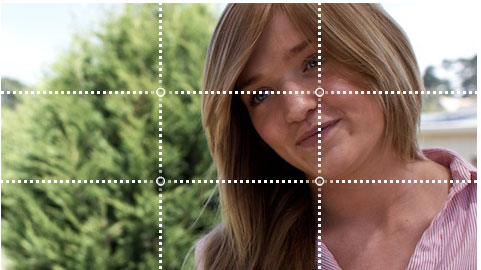
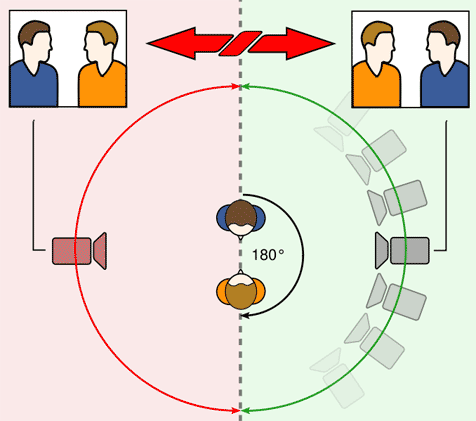
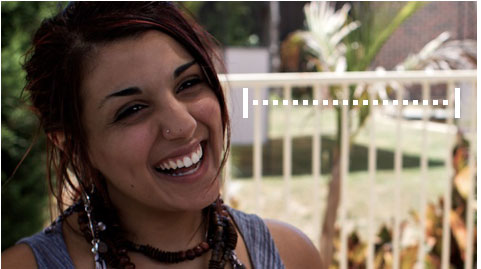

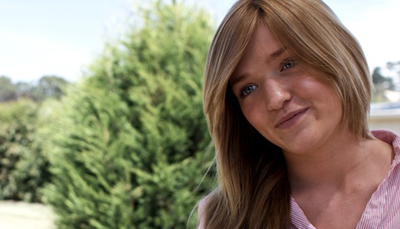


.jpg)
.jpg)



